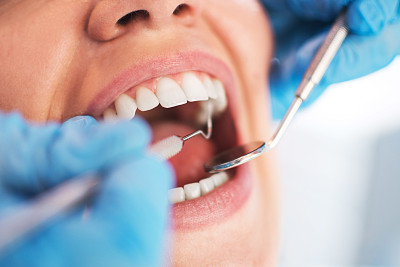The Important Steps and Considerations When You Need to Extract a Tooth for Optimal Dental Health
Summary: Extracting a tooth can often be a necessary decision for optimal dental health, whether due to decay, crowding, or other complications. This article outlines the essential steps and considerations surrounding tooth extraction, emphasizing when it becomes a necessity. We will delve into pre-extraction evaluations, the actual extraction process, post-extraction care, and considerations for preventing future dental issues. Understanding each component helps patients navigate this often-dreaded dental procedure and contributes to maintaining better oral health in the long term.
1. Pre-Extraction Evaluations and Assessments

Before any tooth extraction, it is crucial to undergo a comprehensive dental evaluation. This assessment typically involves taking X-rays, which provide a clear image of the tooth and its surrounding structures. X-rays are essential for identifying any underlying issues that may not be immediately visible, such as bone loss or infections.
During the evaluation, dentists will also assess the overall health of the patient. A thorough health history helps identify any potential complications during the extraction process. Certain medical conditions, like diabetes or heart issues, could influence how the extraction should proceed. Therefore, candid communication with the dentist regarding medications and health conditions is paramount.
Once the evaluation is complete, the dentist can provide a tailored extraction plan. This plan should include specifics about the extraction technique, anesthesia to be used, and aftercare recommendations. This step helps in aligning patient expectations with the clinical procedure.
2. The Tooth Extraction Process Itself
The actual extraction procedure can vary significantly based on the tooths condition, its position in the mouth, and the complexity of the case. For a simple extraction, where a tooth is fully visible and straightforward to remove, local anesthesia is commonly administered to numb the area.
Conversely, more complex cases, such as impacted wisdom teeth, may necessitate surgical extraction techniques. These procedures usually require sedation or general anesthesia to ensure patient comfort. Dentists meticulously plan these extractions, considering the tooths orientation, its roots, and proximity to other crucial structures like nerves.
During the extraction, the dentist will gently loosen the tooth using specific tools before removing it entirely from the socket. Post-extraction, the dentist will take care to minimize bleeding and may place stitches if necessary. Providing clear instructions about what to expect post-procedure is essential to ensure the patient is prepared.
3. Post-Extraction Care and Management
After the extraction, following proper aftercare instructions is vital for healing. Patients should take prescribed pain medications as directed, and ice packs can be applied to the face to manage any swelling. Monitoring the surgery site for excessive bleeding or unusual pain is also essential.
Diet plays a crucial role in recovery. Its generally recommended to consume soft foods that do not require much chewing. Avoiding hot drinks and crunchy foods during the initial healing phase can help prevent irritation to the extraction site.
Maintaining proper oral hygiene is equally important but must be approached with caution. Patients are often advised to wait at least 24 hours before brushing their teeth near the extraction site. Gentle rinsing with salt water can help keep the area clean without disrupting the healing process.
4. Preventing Future Dental Issues After Extraction
Following an extraction, it is essential to focus on preventing future dental problems. Patients should adhere to their dentists recommendations for follow-up care and attend regular dental check-ups. These visits are crucial for monitoring the healing process and addressing any potential complications.
Additionally, maintaining good oral hygiene habits can significantly reduce the risk of additional tooth decay or infection. Brushing twice daily, flossing, and using an antibacterial mouthwash are foundational practices that promote oral health.
Consideration of restorative options, such as dental implants or bridges, can also be prudent. These options help to fill gaps left by extracted teeth, maintaining proper alignment and bite function, thereby reducing future dental concerns.
Summary:
In summary, extracting a tooth is a well-considered process that includes thorough evaluations, meticulous execution of the extraction, and proactive post-operative care. By understanding and following the crucial steps outlined in this article, patients can enhance their dental health and mitigate potential complications.
This article is compiled by Vickong Dental and the content is for reference only



